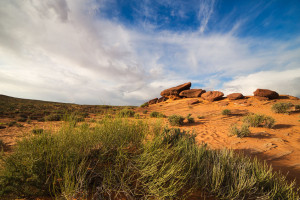Ten reasons Bears Ears is not your average national monument
 Utah is home to some of the most popular National Parks. Not too surprising, since the Federal government owns 35 million Utah acres (66% of the state.) So, what is different about the Bears Ears National Monument?
Utah is home to some of the most popular National Parks. Not too surprising, since the Federal government owns 35 million Utah acres (66% of the state.) So, what is different about the Bears Ears National Monument?
1. It is the first monument requested by native American tribes. In October 2015, after years of archeological thefts and damage, five tribes— the Navajo Nation, Ute Mountain Ute Tribe, Pueblo of Zuni, Hopi Tribe, and Uinta and Ouray Ute Indian Tribe—asked President Obama to create a 1.3 million-acre national monument to protect Bears Ears. It was made official on Dec. 28, 2016. The name comes from the twin buttes in San Juan County.
2. Bears Ears is home to more than 100,000 archeological and cultural sites, considered sacred to many tribes. The majority of the archaeological and cultural sites are dated to at least 700 years old (with some dated as far back as 12,000 B.C.E.) The land is filled with a rich cultural history and contains rock imagery, ancient cliff dwellings, ceremonial sites and artifacts. From petroglyphs and pictographs to baskets, pottery, tool and weapons, the monument holds evidence of North America’s first inhabitants.
3. Less than one year later, President Trump reduced Bears Ears by 85 percent, an action that Utah officials and some residents wanted. There was also concerted lobbying by Energy Fuels Resources (USA) Inc., a uranium firm. They wanted to limit the monument to the smallest size needed to protect archeological sites, to make it easier to access the radioactive ore.
4. Legal challenges ensured. In October 2019, a federal judge sided with Utah tribes who were fighting an attempt by the Trump administration to shrink the size of the Bears Ears.
5. In February 2020, Trump finalized plans to shrink the Bears Ears and Grand Staircase-Escalante national monuments despite legal challenges from environmentalists and Native American tribes.
Critics have expressed concern that the plans for Bears Ears would open lands for development. “This president (Trump) is willing to inflict lasting damage on our country to benefit his industry boosters, and anyone who invests a dollar in drilling or digging in the newly opened areas should be prepared to lose their bet against public opinion and the strength of our legal system,” said House Natural Resources Committee Chairman Raúl Grijalva (D-Ariz.).
6. In April 2021, newly confirmed Secretary of the Interior Deb Haaland spent two days in San Juan County, touring Bears Ears as part of her review of the Utah monument for President Biden. Gov. Spencer Cox said that Utah “likely” would sue the federal government if President Biden enlarges the two national monuments. He referred to a statement from the U.S. Supreme Court suggesting past presidents have gone overboard in their use of the Antiquities Act, the 1906 law that empowers the chief executive to designate monuments on public land.
7. With so much of the area removed from protection, the remains of thousands of Native American settlements and cultural sites are in “grave jeopardy,” said Pat Gonzales-Rodgers, executive director of the Bears Ears Inter-Tribal Coalition. The mysterious monolith that appeared in the monument last year brought more interest, and traffic, to the area.
8. Native American interest in Bears Ears is not only in regards to protecting the past. Many visit the area for ceremonies and to connect with their ancestors. Navajo and Ute people, with reservations bordering Bears Ears, frequent the land to collect herbs and medicine, forage for food, gather firewood for heating and ceremonial use, and to hunt game.
9. The Coalition encourages respectful visitation to preserve the land. It recommends visiting the Friends of Cedar Mesa Visitor Center in Bluff, Utah for more detailed information on how to treat Bears Ears with respect and support its longevity.
10. Bears Ears National Monument will continue to be controversial, but Utahns can be proud of this extraordinary site in our own back yard.






